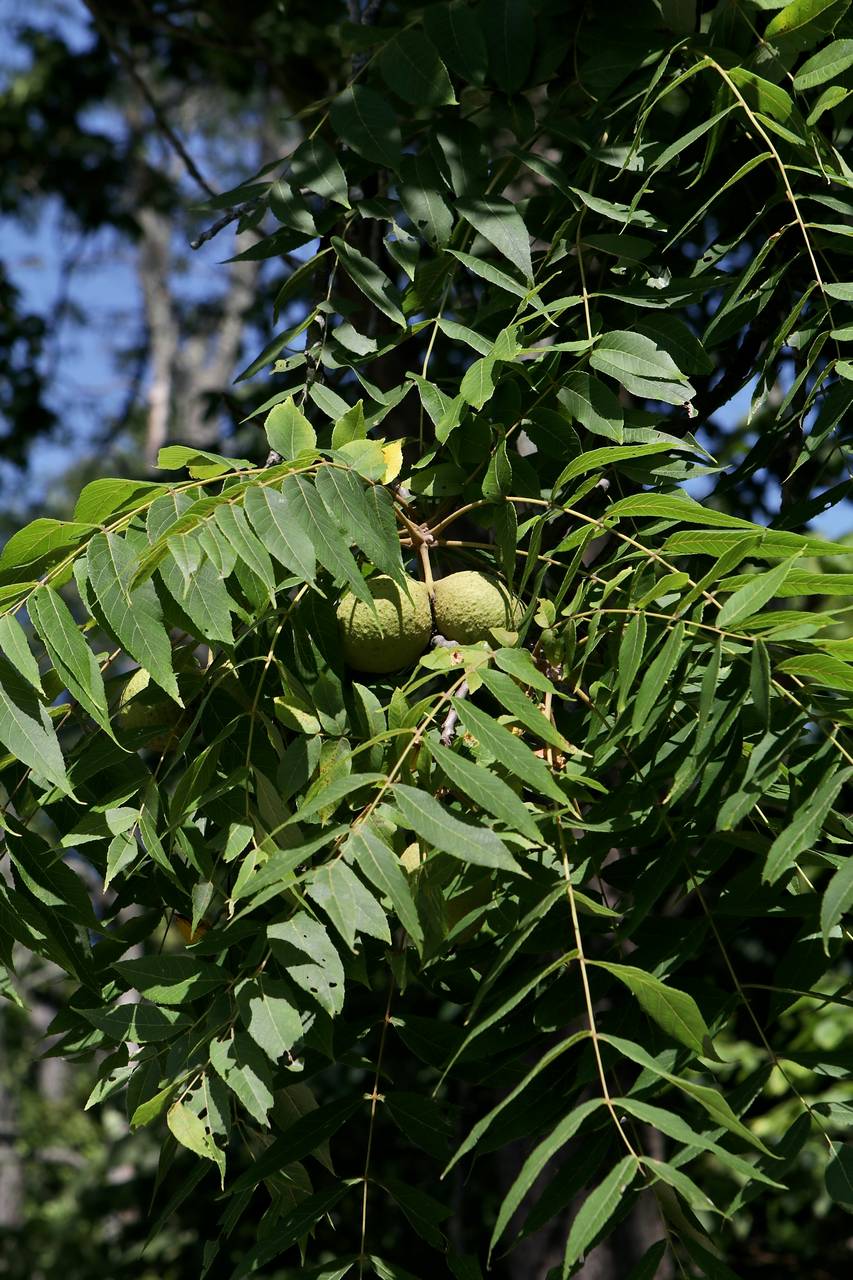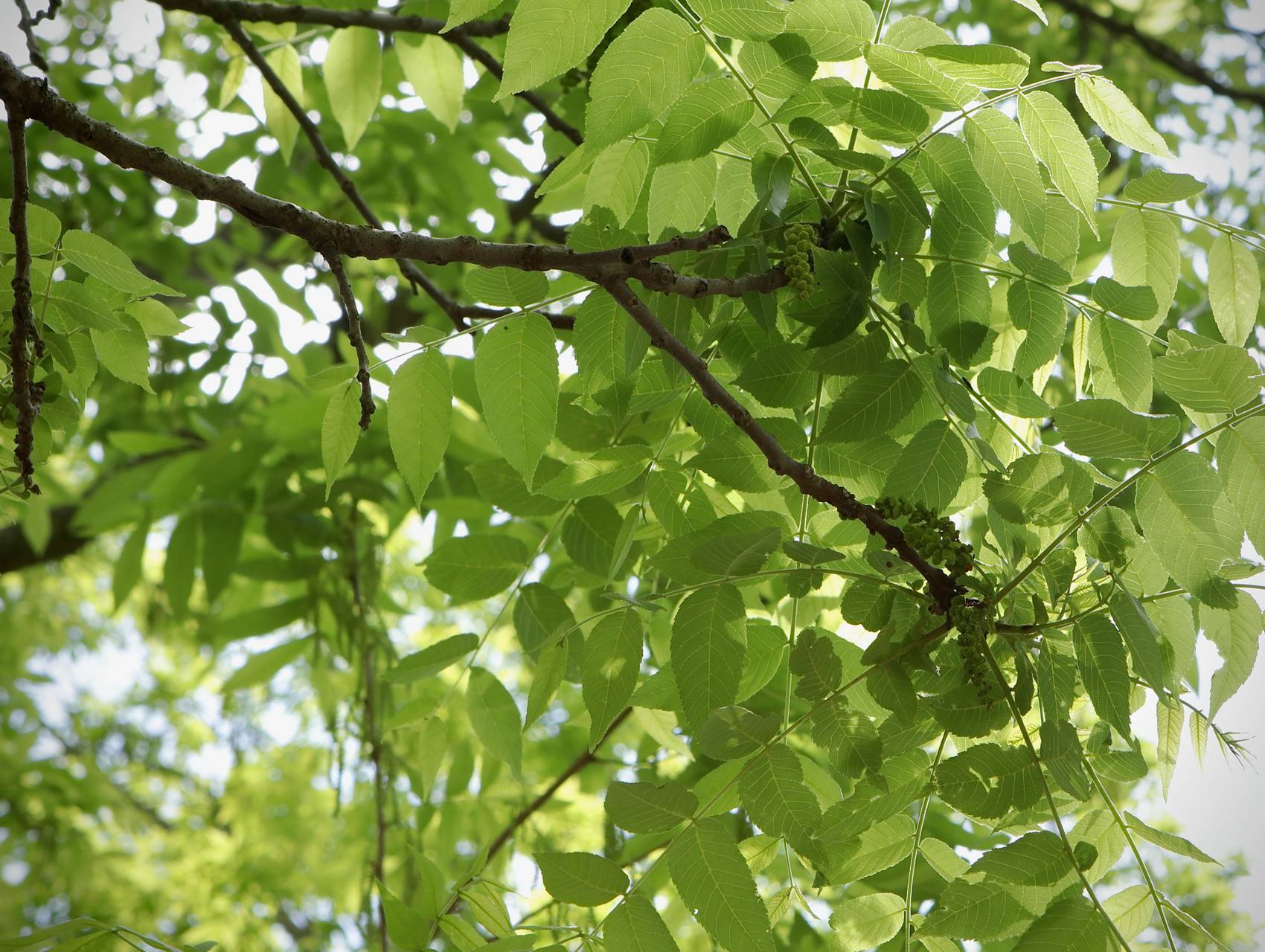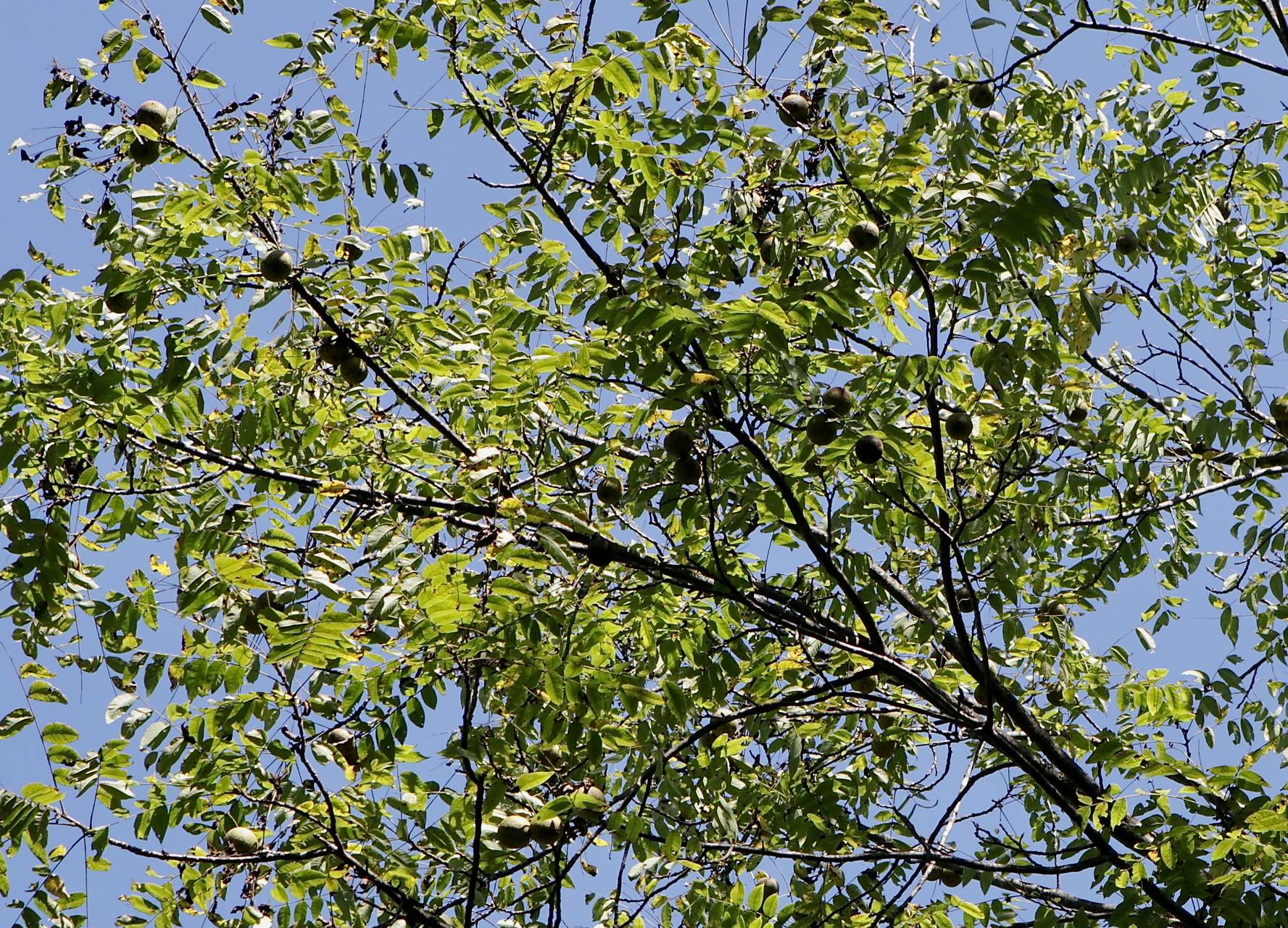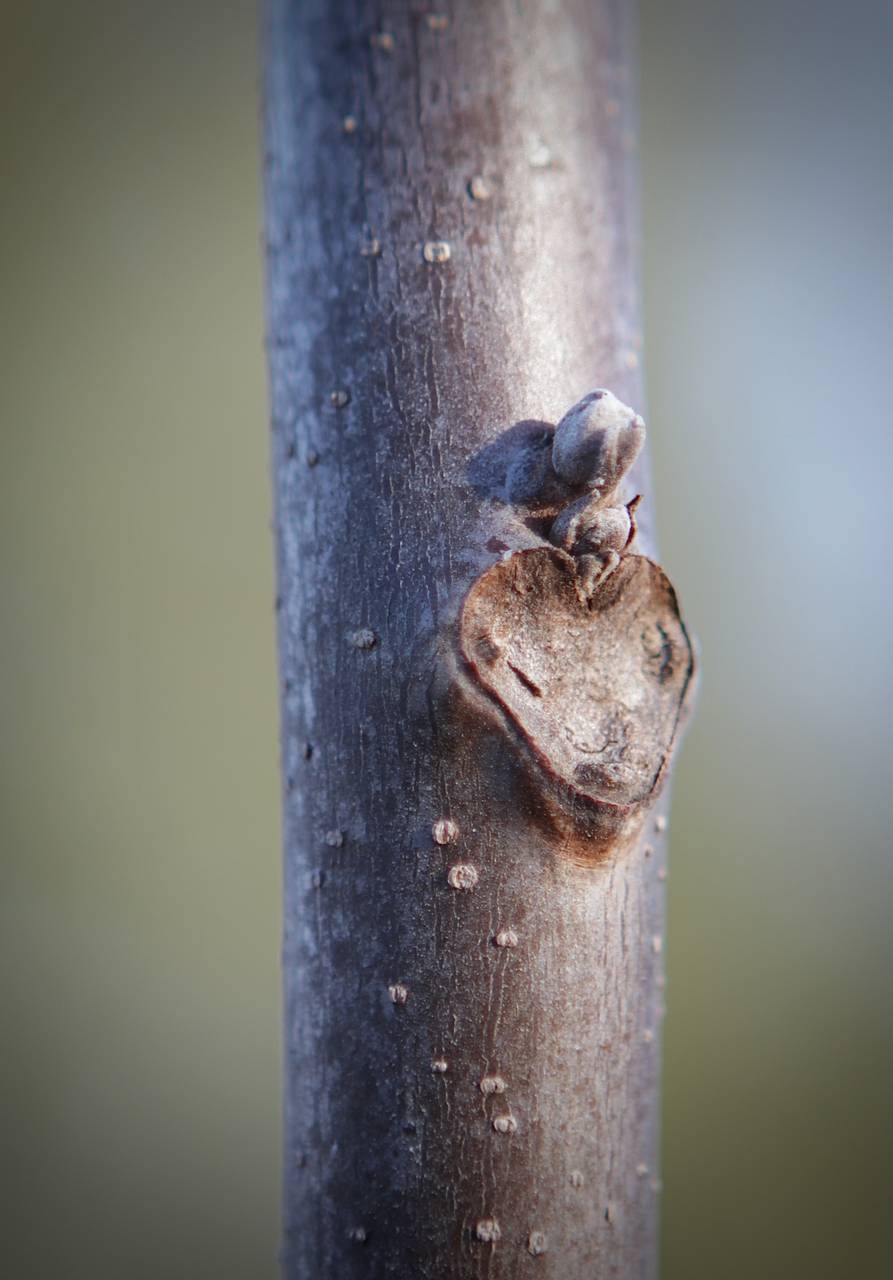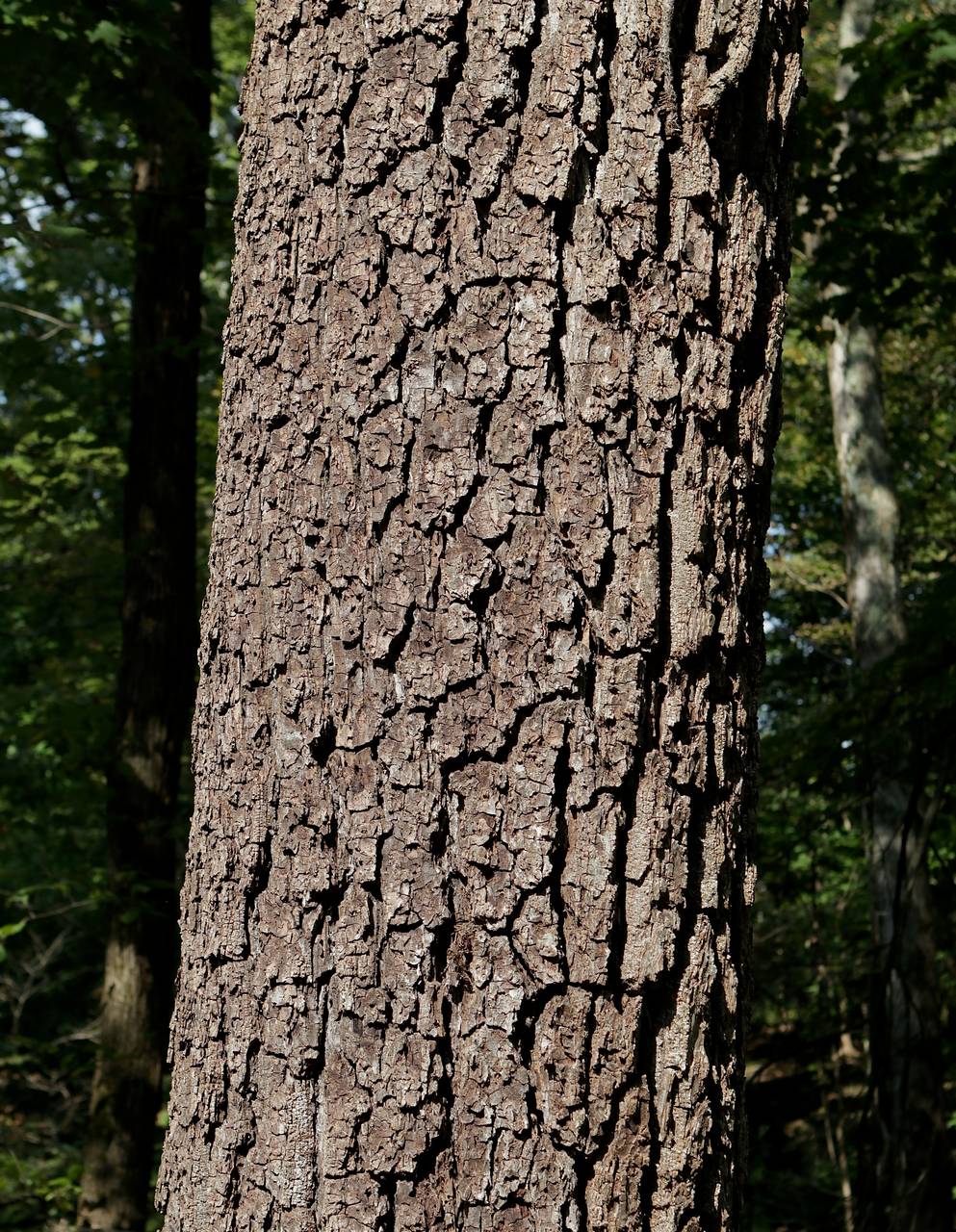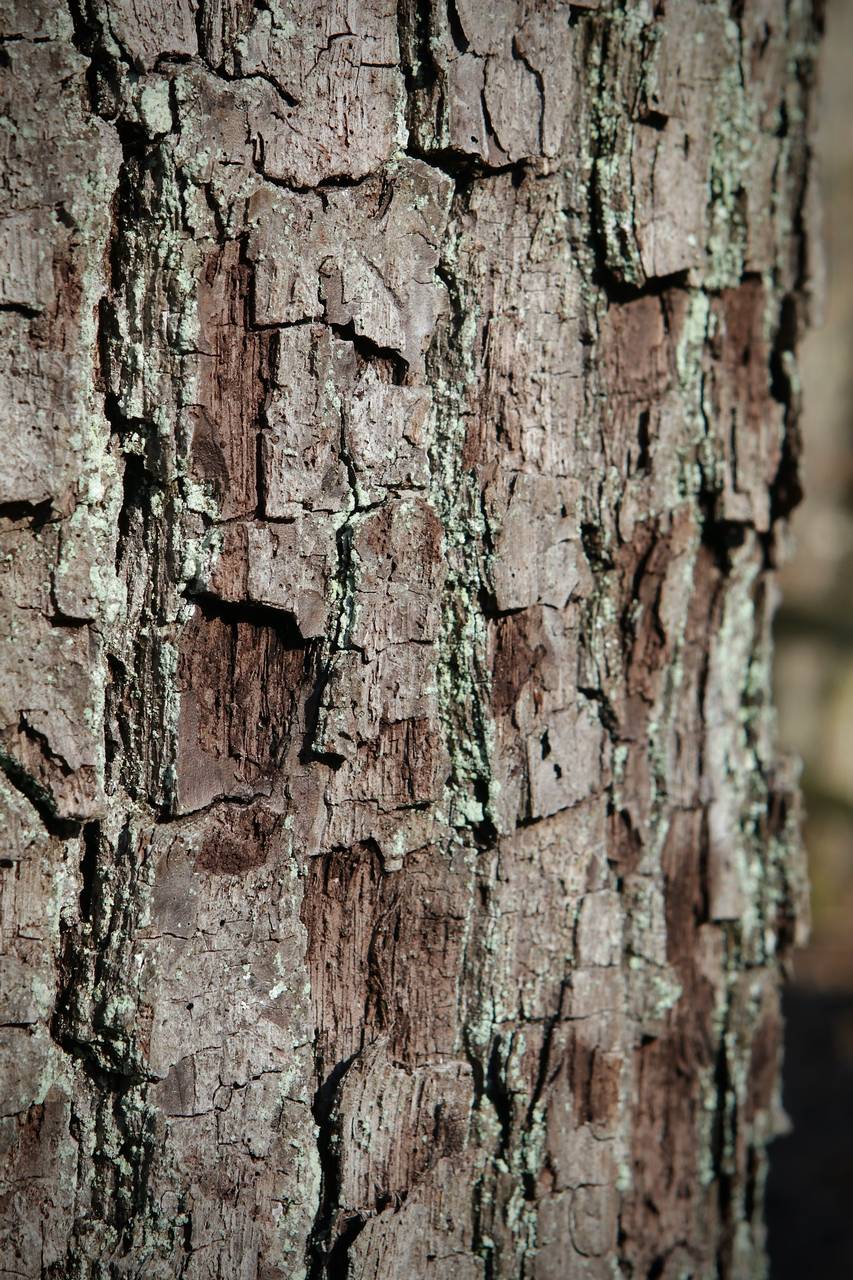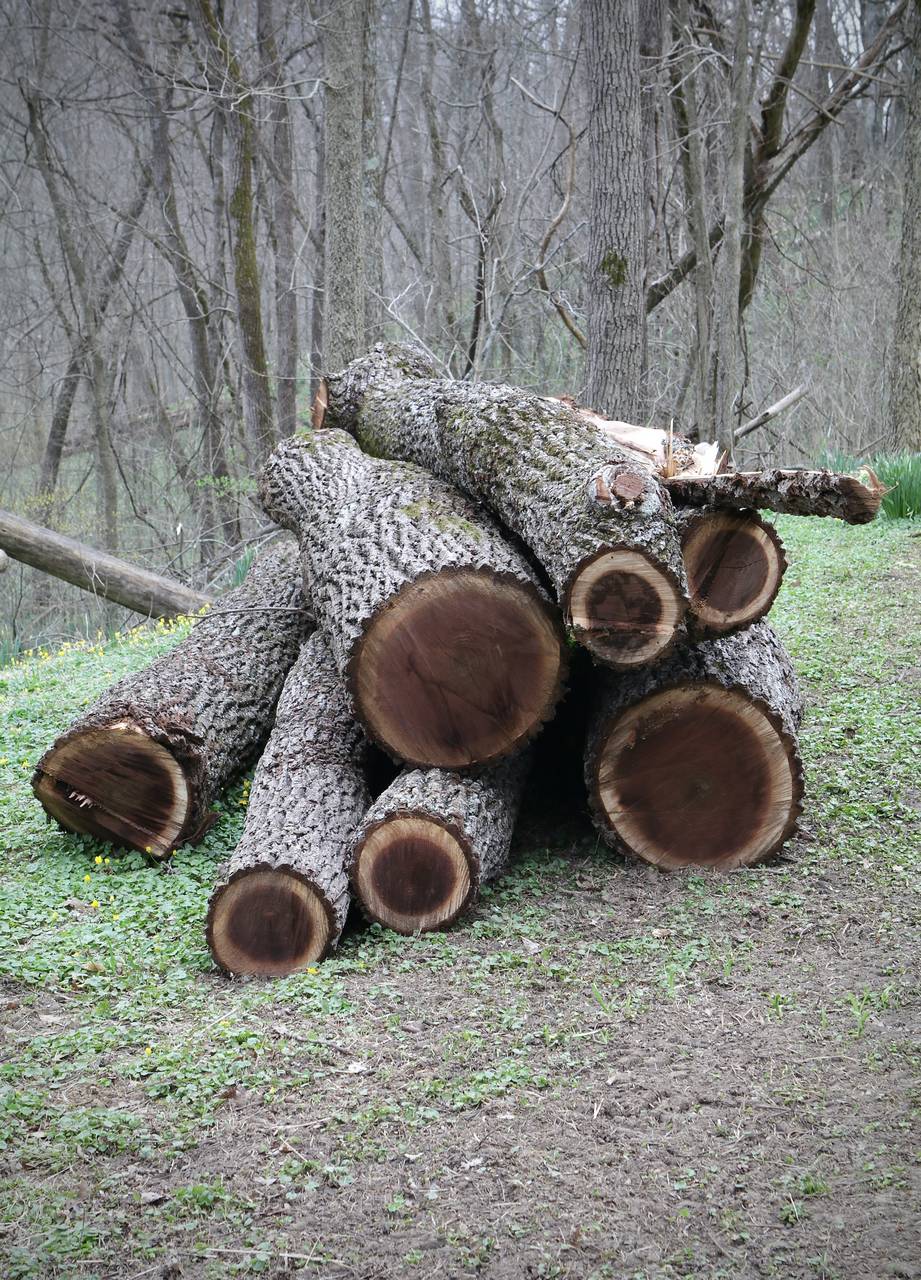Black Walnut
Scientific Name: Juglans nigra
Large, sweet, edible nuts. Heart-shaped leaf scars. Dark bark becoming ridged and deeply furrowed with age, forming a diamondback pattern as the ridges interlace. Inner bark chocolate colored. Roots produce a natural herbicide, juglone, to reduce nearby competition (allelopathy).
